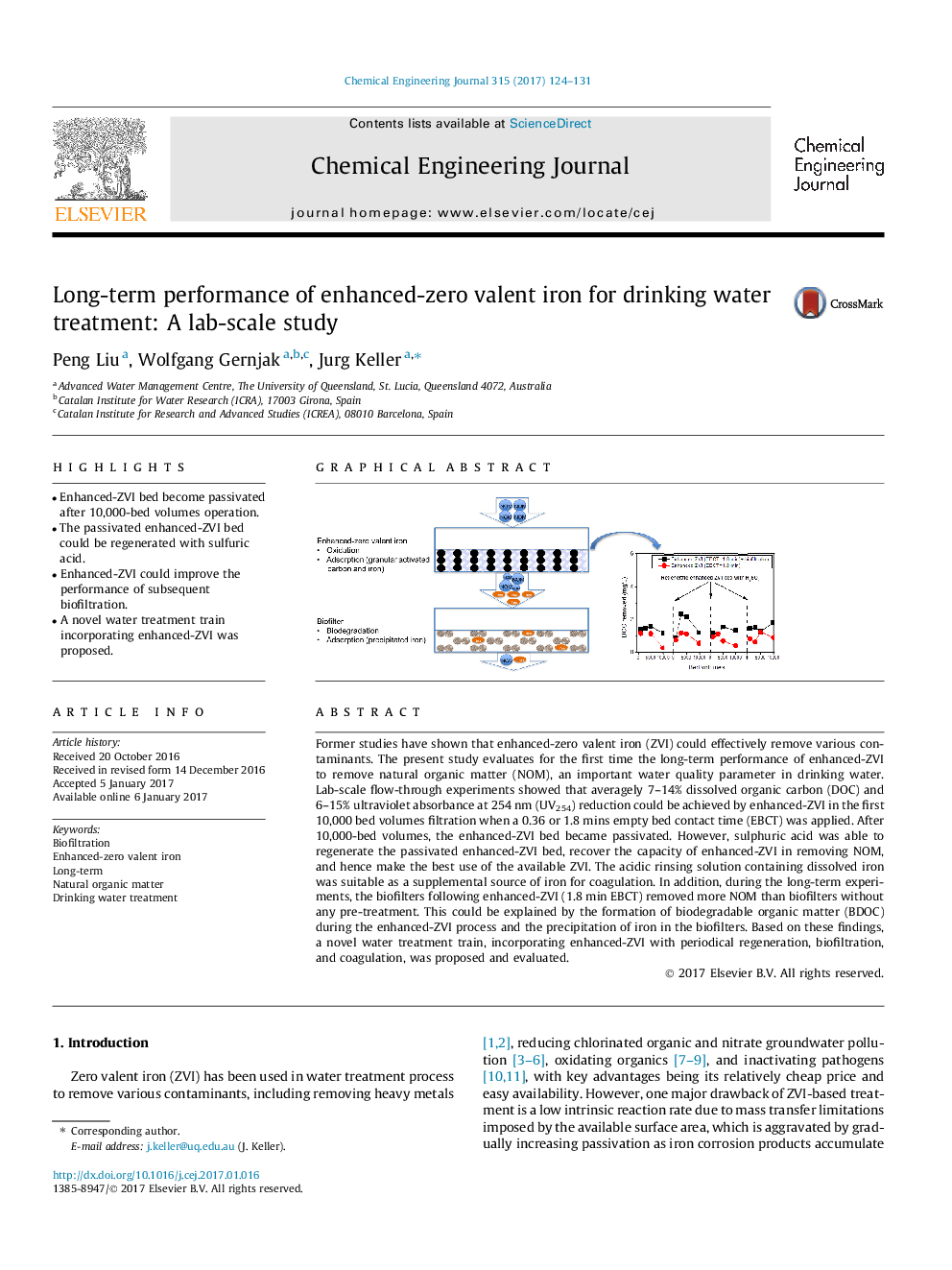| Article ID | Journal | Published Year | Pages | File Type |
|---|---|---|---|---|
| 6466302 | Chemical Engineering Journal | 2017 | 8 Pages |
â¢Enhanced-ZVI bed become passivated after 10,000-bed volumes operation.â¢The passivated enhanced-ZVI bed could be regenerated with sulfuric acid.â¢Enhanced-ZVI could improve the performance of subsequent biofiltration.â¢A novel water treatment train incorporating enhanced-ZVI was proposed.
Former studies have shown that enhanced-zero valent iron (ZVI) could effectively remove various contaminants. The present study evaluates for the first time the long-term performance of enhanced-ZVI to remove natural organic matter (NOM), an important water quality parameter in drinking water. Lab-scale flow-through experiments showed that averagely 7-14% dissolved organic carbon (DOC) and 6-15% ultraviolet absorbance at 254Â nm (UV254) reduction could be achieved by enhanced-ZVI in the first 10,000 bed volumes filtration when a 0.36 or 1.8Â mins empty bed contact time (EBCT) was applied. After 10,000-bed volumes, the enhanced-ZVI bed became passivated. However, sulphuric acid was able to regenerate the passivated enhanced-ZVI bed, recover the capacity of enhanced-ZVI in removing NOM, and hence make the best use of the available ZVI. The acidic rinsing solution containing dissolved iron was suitable as a supplemental source of iron for coagulation. In addition, during the long-term experiments, the biofilters following enhanced-ZVI (1.8Â min EBCT) removed more NOM than biofilters without any pre-treatment. This could be explained by the formation of biodegradable organic matter (BDOC) during the enhanced-ZVI process and the precipitation of iron in the biofilters. Based on these findings, a novel water treatment train, incorporating enhanced-ZVI with periodical regeneration, biofiltration, and coagulation, was proposed and evaluated.
Graphical abstractDownload high-res image (109KB)Download full-size image
